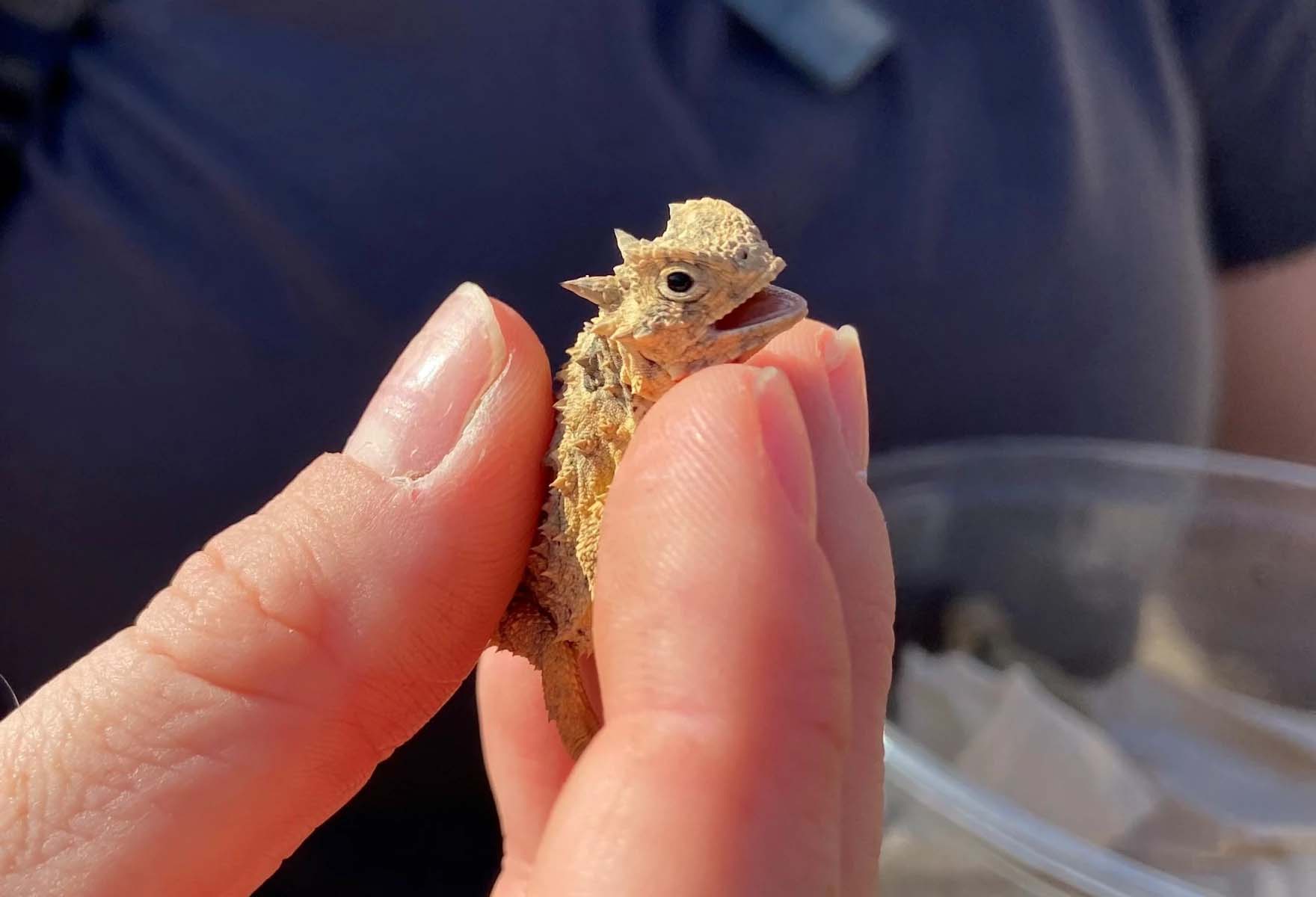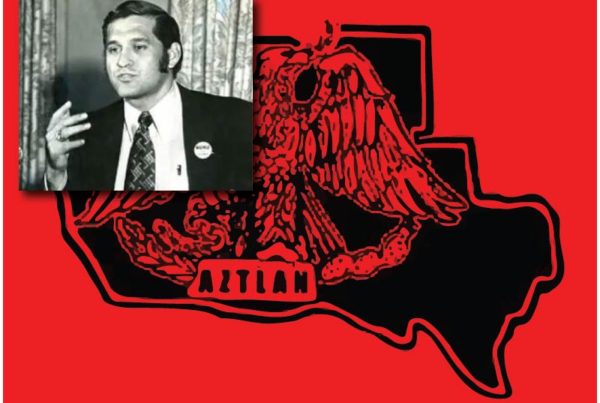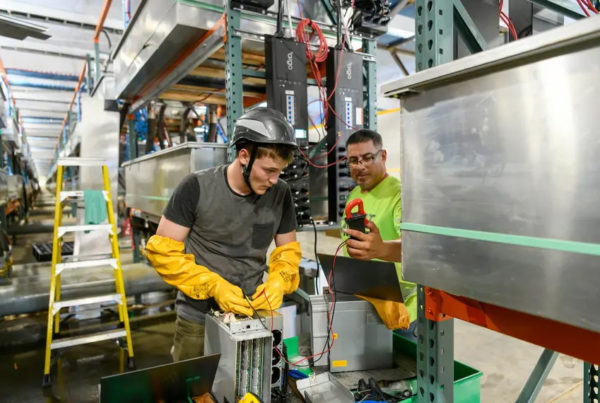From Texas Public Radio:
Texans of a certain age probably used the phrase “horny toad” to refer to the small pointy reptile. Texas Christian University celebrates the “horned frog” as its mascot. The little animal is beloved in the Lone Star State.
The horned lizard looks like a tiny holdover from dinosaur days. But unlike the dinosaur, horned lizards are not extinct … not yet. And a team from the San Antonio Zoo is working to ensure they never do become extinct.
That campaign recently took them and their volunteers to a lush, rolling Blanco County ranch for a special event. Live Oaks, Post Oaks, Persimmons and Prickly Pear cactus were everywhere.
“Today is a very exciting day for all of us, said Andy Gluesenkamp, director of conservation at the Center for Conservation Research at San Antonio Zoo. “We’re getting ready to conduct our third round of horned lizard releases.”
For the last five years, the zoo has hatched baby horned lizards. When they’re a month or two old, the team releases them on select Hill Country ranches.
Zoo officials and the owner of the ranch the team visited on this day asked TPR to remain anonymous and to not identify the property.
Gluesenkamp offered an overview of the site. “This is a 2,000 acre ranch surrounded by other ranches of similar size,” he explained. “And this ranch has been under conservation management since 2006.”
That conservation management includes removal in non-native species, control of fire ants and not using chemical pesticides. Gluesenkamp said it takes a certain kind of rancher to do these things.
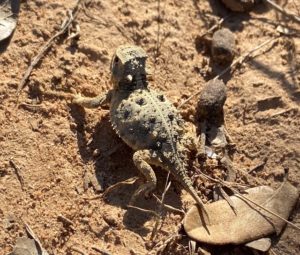
A horned lizard checking out its new home.
Photo by Jack Morgan / Texas Public Radio
“Rather than trying to wring every nickel of every eight out of every acre through agriculture, this landowner values native biodiversity and the native Texas landscape,” he added.
“I moved to central Texas about 40 years ago,” the ranch owner explained. “And the first year, I spotted a single horned lizard. And I haven’t seen one since.”
The rancher felt a responsibility to try to turn around the bad trends on the land. “For about 15 or 16 years, I tried to bring it back to a more natural state, the way it might have been 100 or 200 years ago. … And so adding horned lizards is a good step in that process.”
Those horned lizards were all over most of Texas 40 years ago. So what happened? Gluesenkamp said there were several reasons.
“We all like to blame fire ants, and certainly they deserve a good chunk of blame,” he said. “Cats. Development, urbanization, fragmentation of these little remaining patches of habitat.”
Fire ants are one issue that was readily controllable before they introduced the horned lizards. But how could the voracious ants be killed without chemicals?
Gluesenkamp devised a solution. “I built a special stainless steel wand that lets me inject steaming hot water at 3000 psi, two or three feet beneath the surface,” he explained. “And so, in effect, it’s basically laser surgery for fire ants.”
The harvest ant, on the other hand, was left alone because it is a major food source for the horned lizard.
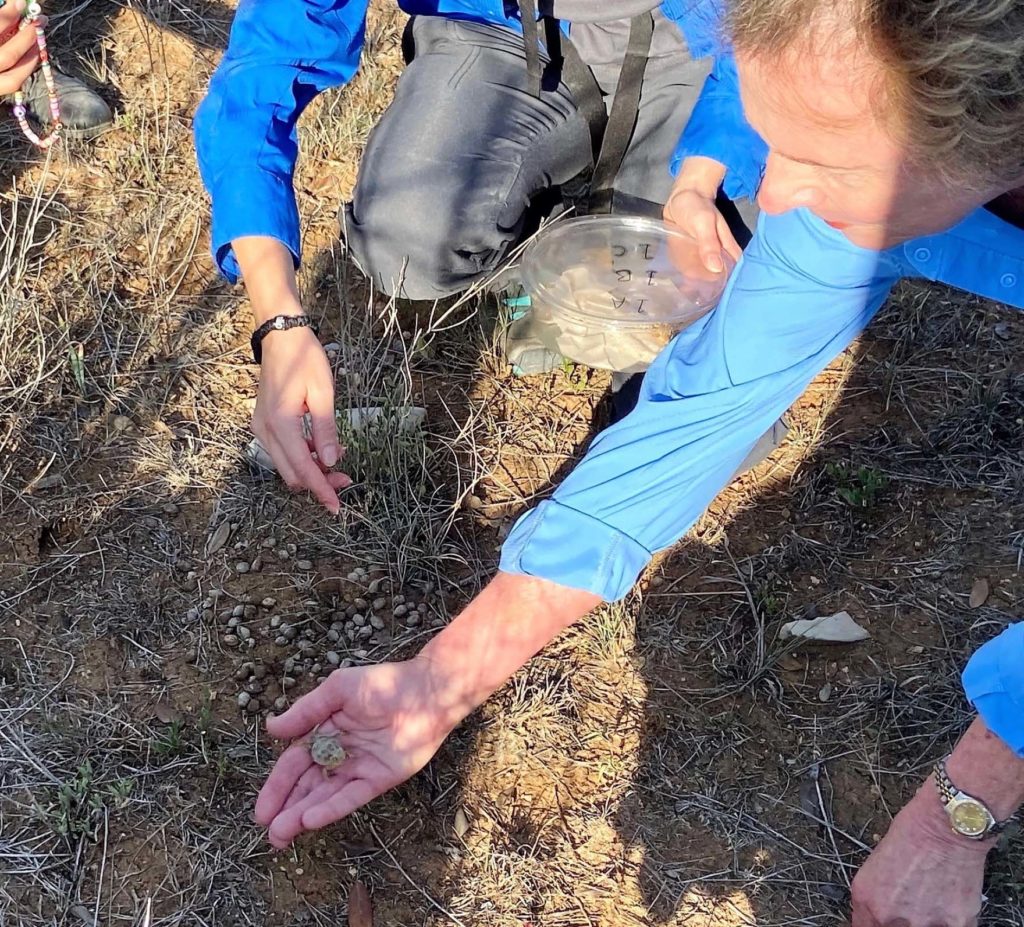
Pat Davis lets a Horned Lizard down easily.
Photo by Jack Morgan / Texas Public Radio
Gluesenkamp said the event at the ranch is one of a series of similar events that he hopes will give horned lizards a toe-hold back into their permanent home. “Hopefully it won’t be just restricted to this small portion of this large ranch,” he added, “but will spread to the rest of this habitat behind us and to adjacent ranches.”
This ranch was beautiful but there didn’t seem to be a lot of easily accessed water. Gluesenkamp said that wasn’t a problem for the animals.
“Horned Lizards don’t drink a lot of standing water in the wild,” he explained. “If you notice, they have all these horns on their on their bodies, especially on top of their heads. They can collect dew moisture [that] will run down little grooves between these scales to a corner of their mouth.”
Once the team gathered, it got down to business.
“Yesterday, Britney, Andy and I were out here and we went ahead and put flags out where we think all the lizards are going to go. So we have 50 lizards, 50 flags,” said Kamryn Richard, senior conservation technician at the Zoo.
With that, about 40 participants walked a few hundred yards to the farthest flag to begin releasing the lizards.
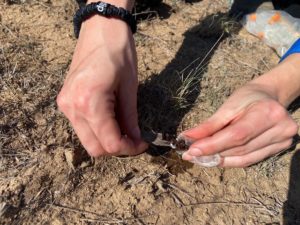
Kamryn Richard gathers scat.
Photo by Jack Morgan / Texas Public Radio
Richard carefully pulled a spiny two-inch horned lizard from a plastic container and handed it to a volunteer. “I’ll just hand you one, and you just set him down right by the base of the stalk,” she said. “Good luck out there, little one! I see he’s a great color for this specific area.”
The little lizard quickly hid in the brush. “It’s so cute when they do that!” she said, laughing.
Pat Davis was among the participants who released one of the lizards. “This is very exciting day,” she said. “I haven’t probably seen one since I was ten years old in Dallas many years ago. So they were very plentiful at the time, but certainly no more.”
She added that it’s been decades since she held one, so the experience will stick with her. “It was it was a magical feeling, really. It was just I couldn’t believe I was getting to hold one again.”
Richard was delighted as she distributed the lizards among the participants to release in the wild. She said she knew initially this program would be popular. But she was surprised at how popular it’s become.
“People in Texas have a connection to this species,” she explained. “And what we love about that is they kind of act as this mascot for conservation. … They care about this animal and they want to know where it went. They want to bring it back. Which is awesome for Texas horned lizards, but it’s extra awesome because it helps all sorts of native Texas animals.”
As the lizards were released, Gluesenkamp excitedly called out to the crowd: “Hey, guys! If you’d like to see wild horned lizard scat, there’s horned lizard poop right here!”
Participants quickly gathered around him, He pointed to the scat and a pile of dark red items next to it.
“That’s that’s ant legs and heads,” he said. We don’t have any other lizards out here that make a do … like this lizard … done.”
The crowd broke out into laughter, appreciating the pun.
“So, I’m pretty sure that it’s a Texas horned lizard scat,” he said.
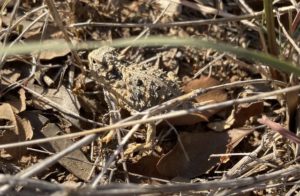
A horned lizard getting its bearings.
Photo by Jack Morgan / Texas Public Radio
The finding was important. It signified that horned lizards from previous releases have survived and still live here. While true success is measured over a much longer time, it was a sign of progress.
Richard placed the scat into a vial. “That’s going to tell us which animal this scat came from, which individual released last year made this turd,” Gluesenkamp explained.
“We send that off to a collaborator, our esteemed Dr. Dean Williams at Texas Christian University,” Gluesenkamp added, “and he runs a horn lizard genetics lab. And they already have genotyped all of our individual lizards. … So they literally will be able to tell which horned lizard, released which day, produced this scat.”
Volunteer Tina Adkins was positive and hopeful for the lizards. “I hope they can find some good little rocks to burrow under and help increase them,” she said, “so that kids in the future generations will be able to play with them and see them as we did when we were kids.”


